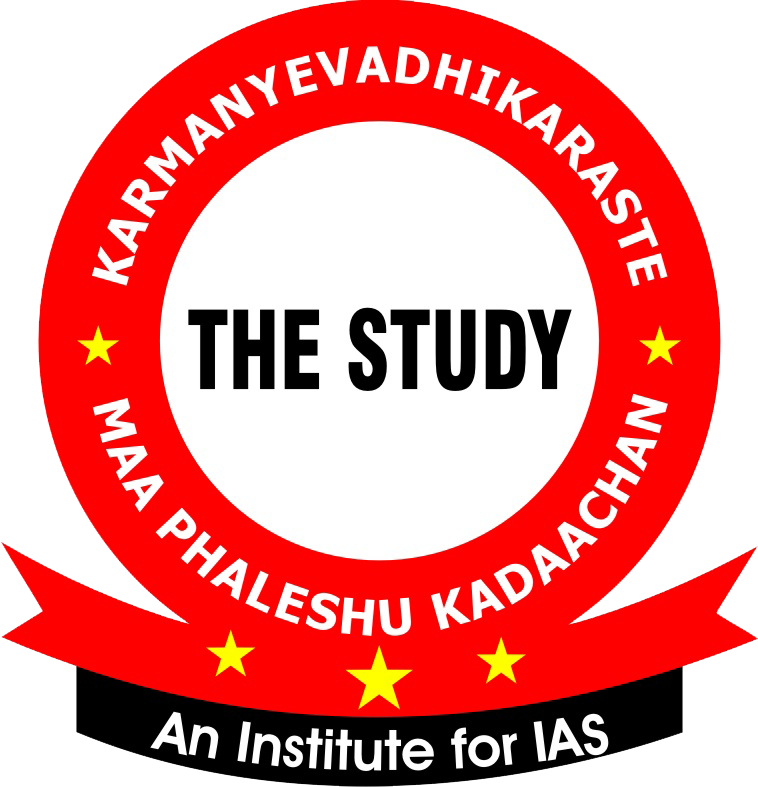World MSME Day 2023, Appointment of Priests, India- Egypt, Meitei Community
World MSME Day 2023
Why in the News?
- The United Nations designated June 27 as Micro, Small and Medium-Sized Enterprises (MSME) Day in 2017. The purpose of this day is to recognize and celebrate the significant contribution of MSMEs to the global economy and also honour their role in achieving the Sustainable Development Goals (SDGs).
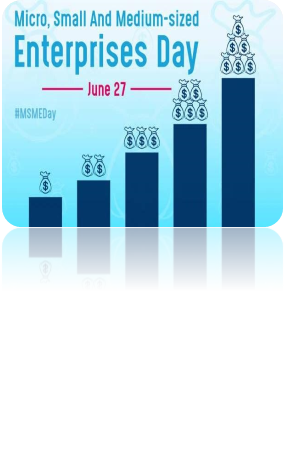
- According to the United Nations data, the MSMEs account for up to 90% of businesses, over 60% to 70% of jobs worldwide, and half of global GDP.
About MSME
- The Ministry of Micro, Small and Medium Enterprises (MoMSME) in India is responsible for formulating and implementing policies and programs to promote, develop, and enhance the competitiveness of MSMEs.
- MSMEs are considered the backbone of the Indian economy and have played a significant role in its socio-economic development.
- They have the potential to contribute to the achievement of Sustainable Development Goals (SDGs), foster innovation and creativity, and promote decent work opportunities.
- Delayed payment to MSME suppliers by large businesses can lead to problems.
- In India, MSMEs contribute nearly 33% to the country's GDP and employ over 110 million people across approximately 63 million enterprises.
- They account for 45% of India's manufactured goods, over 50% of total exports, and produce over 8,000 products with added value, ranging from traditional to advanced tech items.
About World MSME Day 2023
- June 27 has been designated by the United Nations as "Micro, Small and Medium-Sized Enterprises Day".
Theme:
- The theme for MSME Day 2023 in India is "Future-ready MSMEs for India@100."
- The Global Council for the Promotion of International Trade is celebrating the day with the theme "Building a Stronger Future Together" for the year 2023.
- The global body is launching the #Brand10000MSMEs Network, a dynamic platform for MSMEs worldwide to connect, learn, and grow together.
- The Ministry of MSME will launch various initiatives for the growth and development of MSMEs, including the CHAMPIONS 2.0 Portal and Mobile App for Geo-tagging of Cluster Projects and Technology Centers.
- The program will declare the results for 'MSME Idea Hackathon 2.0' and launch 'MSME Idea Hackathon 3.0' for Women Entrepreneurs.
Objective - The objective of the festival is to improve the business environment for MSMEs, encourage innovation and development of new products and services, promote regional development and reduce regional disparities, create market opportunities in both domestic and global markets and promote MSME encourage them to adopt sustainable practices.
Importance of World MSME Day
- MSMEs have the potential to transform economies, promote job creation, and foster equitable economic growth.
- They provide financial independence to the most vulnerable sections of society.
- The employment rate of women in registered MSMEs is approximately 24%, while in unregistered enterprises, it is reported at 13.02%.
- Financial inclusion can play a significant role in promoting gender equality. Evidence shows that around 80% of women-owned businesses facing credit needs are underserved or unserved, resulting in a financing gap of approximately $1.7 trillion.
- MSMEs Day highlights the importance of resilient supply chains that benefit workers and the environment. Conflicts, disasters, and pandemics can disrupt supply chains, leading to higher costs and transactional challenges.
- The program aims to showcase the role of MSMEs and explore opportunities for their growth. It provides a platform for small business owners to discuss entrepreneurship and challenges, while governments, international organizations, and business support agencies demonstrate their commitment to support.
*****
The Role of Caste in the Appointment of Priests
Why in the News?
- Recently, the Madras High Court stated that there is no role of caste in the appointment of Archaka (temple priests), meaning that any person can be appointed as a priest without considering their caste or sect, as long as they are well-versed in religious texts and rituals.
Reason of petition
- A writ petition was filed by Muthu Subramaniam Gurukal in 2018, challenging a job announcement for the post of Archagar/Sthanigar (temple priest, also known as Archaka) in Sri Sugavaneswarar Swamy Temple, Salem.
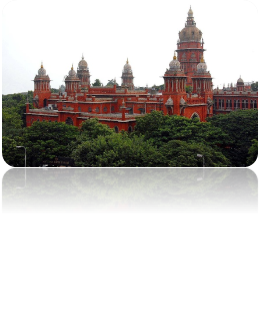
- The petition argued that the appointments were required to adhere to specific Agama principles (scriptures governing temple rituals) followed by the temple. It further claimed that the job advertisement violated the hereditary right of the petitioner and those serving since ancient times.
Key points
- According to Justice N Anand Venkatesh, the appointment of temple priests would be governed by Agama.
- Past Supreme Court rulings were cited in the order, stating that the caste of a priest is not integral to religion.
- Any individual, regardless of their caste or religious background, can be appointed as an Archaka if they possess the necessary expertise and proficiency in the relevant religious scriptures and rituals.
- The apex court distinguished between the religious and secular aspects, considering the religious service by an Archaka as the secular part of the religion.
- The performance of the religious service is deemed an integral part of the religion.
- The significance of Agamas lies in the performance of religious service, and thus, anyone from any caste or creed can be appointed as an Archaka if they are well-versed and proficient in the Agamas and the required temple rituals.
M Chockalingam Committee
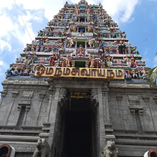
- According to the Madras Court in 2022, a committee headed by retired Madras High Court Justice M Chockalingam was formed. The committee's purpose was to identify temples in the state based on whether they follow Agamic (scripture-based) or non-Agamic practices.
- The high court order stated that appointments in temples could proceed as usual, even before the committee submits its report, if there was no ambiguity regarding the specific Agama to be followed for a particular temple.
About Sugavaneswarar Swamy Temple
According to historians, the Sugavaneswarar temple was constructed by Mamnan Sundar Pandyan in the 13th century. The Puranas also mention that Ovvaiyar worshiped Vinayaka in this temple before departing for Kaalayam. The temple holds historical remnants of the Chera, Chola, and Pandya dynasties.
The entrance of the temple faces south, while the temple itself faces east. The front mandapam and Thiru Nanthi mandapam are situated opposite the entrance. Vinayagar can be found to the south of the tower entrance.
The Sugavaneswarar Temple is dedicated to Lord Shiva. The primary deity of the temple is Lord Shiva in the form of a Lingam known as Sugavaneshwarar , accompanied by his consort Sri Swarnambigai Amman.
*****
India- Egypt
Why in the news?
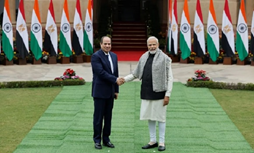
- Prime Minister Narendra Modi's visit to Cairo was based on the visit of Egyptian leader Abdel Fattah el-Sisi who was the chief guest at India's Republic Day parade.
Key points:
What is the Order of the Nile?
- The Order of the Nile was started in 1915.
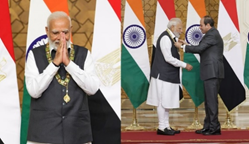
- It is a prestigious honour bestowed by Egypt to recognize individuals who have made significant contributions to the country or demonstrated outstanding humanitarian efforts.
- The award is designed in the form of a gold collar, with Pharaonic symbols incorporated into the gold units. The first unit symbolizes the protection of the state against evils, the second unit signifies prosperity and happiness brought by the Nile, and the third unit represents wealth and endurance.
- The award features a circular gold pendant adorned with turquoise and gems, and it consists of three interconnected units.
About India-Egypt relations:
- Egypt's control over the Suez Canal in 1956, its defeat in the Arab-Israeli War of 1967, and its recognition of Israel in 1977 have established its significance in West Asian geopolitics.
- India has supplied wheat to Egypt, which is the world's largest importer of grain.
- India's focus on bilateral relations with Egypt is a notable step toward becoming a prominent player in the "global south" as a vocal advocate and emerging economic power.
- China has exerted substantial economic influence in Egypt, particularly in areas such as smart agriculture and infrastructure development.
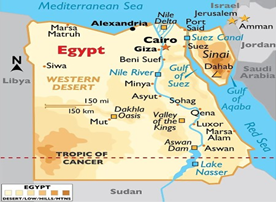
The India-Egypt strategic partnership is built on four pillars:
1. Politics, Defense and security.
2. Economic integration.
3. Academic and scientific collaboration.
4. Cultural and people-to-people contacts.
The Suez Canal serves as a convenient trade gateway for India to access Gulf countries and North Africa, facilitating regional trade.
Egypt actively encourages Indian industrial investments in the Suez Canal Economic Zone, promoting economic cooperation between the two nations.
India aims to enhance defense trade with Egypt, supporting its self-reliant defense production. Egypt has reportedly shown interest in India's Tejas Light Combat Aircraft, as shown interest during Defense Minister Rajnath Singh's visit.
*****
Meitei Community
Why is the news?
- The Meitei community residing in the valley of Manipur has been consistently demanding Scheduled Tribe (ST) status.
- Despite numerous requests made by the community since 2013, the government has not taken any action, in accordance with an order issued by the Manipur High Court.
- As a result, tribal groups in the hilly districts have initiated protests, leading to a cycle of ethnic violence and plunging the state into a severe crisis.
- The primary demand, particularly from the Vaishnav Meitei community, is to be granted Scheduled Tribe status, along with the implementation of the Inner Line Permit (ILP) system. The ILP restricts the entry of outsiders into the state and was initially proposed in Parliament in 1980.
First Demand, 2012
- The initial demand for inclusion in the Scheduled Tribe (ST) category was made in 2012 when the Scheduled Tribe Demand Committee of Manipur (STDCM) was established.
- In 2023, the newly formed Meitei Tribe Union (MTU) filed a writ petition in the High Court, urging both the state and central governments to consider the demand for ST status for the Meitei community.
- The first memorandum presenting the demand was submitted by STDCM to the then Governor of Manipur, Gurbachan Jagat, in November 2012. It argued that before the merger agreement between Manipur State and the Indian Union in 1949, the British administration had classified the Meitei community as "among the tribes of tribes."
Union Government Response-
- In 2013, the Ministry of Tribal Affairs requested the Manipur government to consider including the Meitei community in the Scheduled Tribe (ST) list. The request was accompanied by the latest socio-economic survey data and an anthropological report on the community.
- However, there is no record or evidence of any such document or request being submitted by the government of Manipur in Imphal, indicating that no formal action has been taken to include Meiteis in the ST category.
‘Identity, not quota’
- The Meitei population in Manipur accounted for 59% in 1951 but decreased to 44% by 2011, indicating a relative decline in their share of the total population over time.
- Within the Meitei community, certain sections have been granted Scheduled Caste (SC) status, while others have been categorized as Other Backward Classes (OBC) for the purpose of government policies and reservations.
- The Meitei community possesses only 8% of the land in Manipur, and there are no restrictions on outsiders purchasing land and settling in the region.
- In contrast, tribal groups argue that they now constitute 40% of Manipur's population but are underrepresented in the legislative assembly, implying a disparity in political representation.
Old ‘Permit’ system
- During the first census of Manipur in 1881, the total population was recorded as 221,070. This population consisted of 117,108 Meiteis, 85,288 individuals from hill tribes, 105 foreigners and Muslims, and 18,569 Mayangs (outsiders).
- In 1901, the Manipur kingdom implemented a "permit" or "passport" system to regulate the entry of "foreigners" (including other Indians) and non-Manipuris. This system was introduced to maintain control over the demographic composition of the region. According to the 1901 census, Manipur's population had increased to 284,465.
*****
